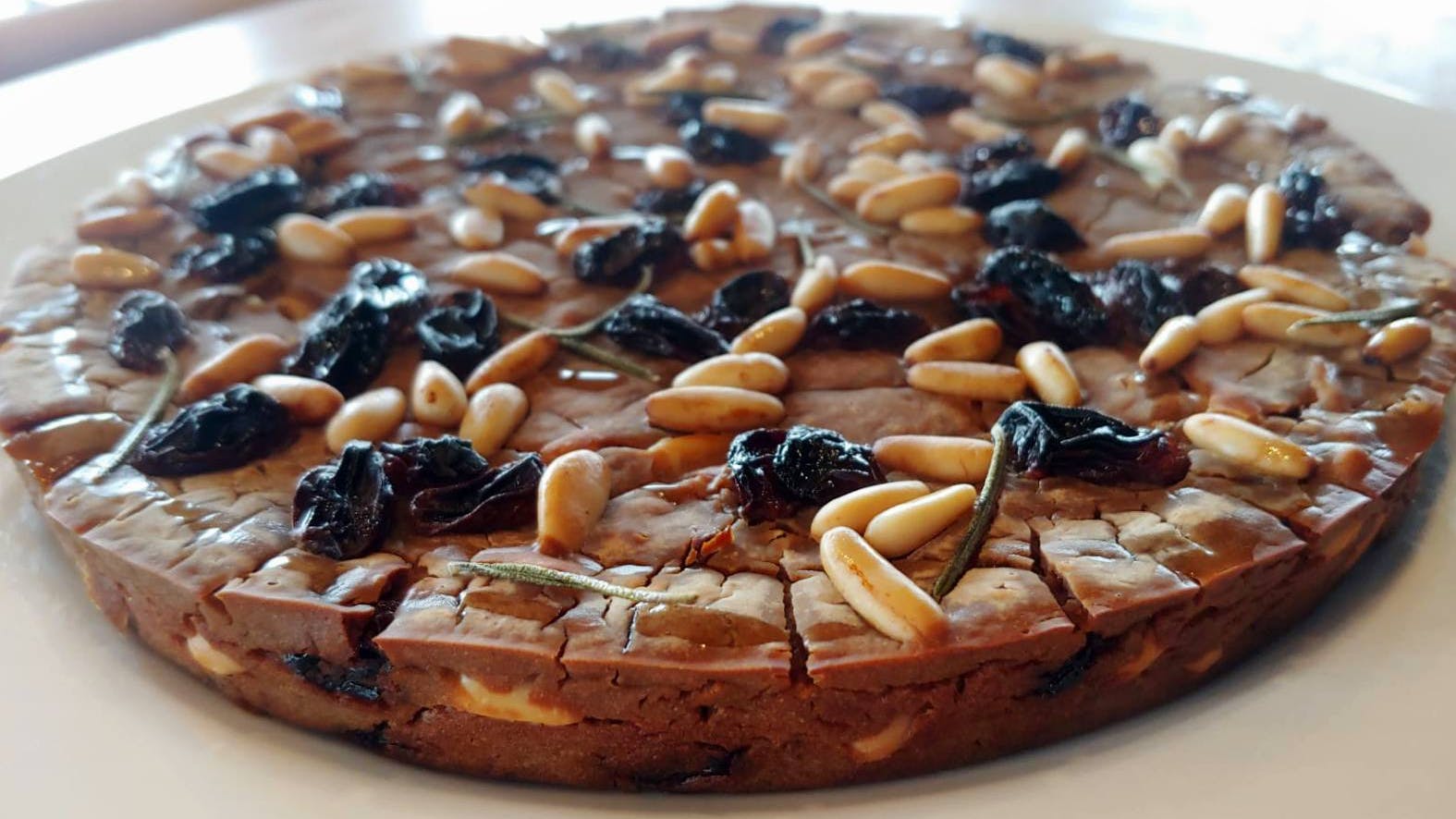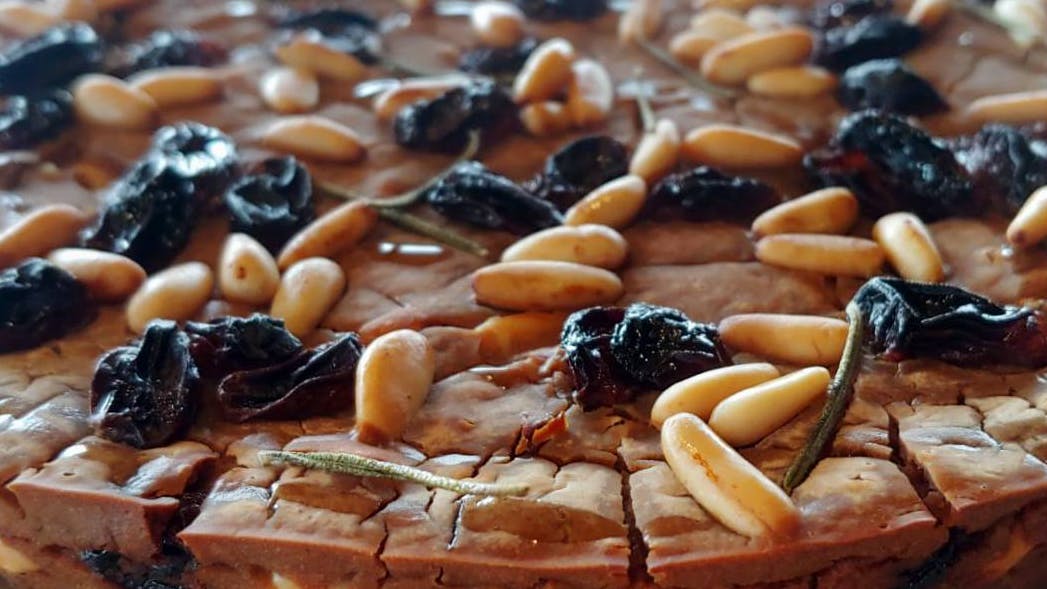

Castagnaccio is one of the most iconic desserts of the autumn culinary tradition in Central Italy, particularly in Tuscany.
It’s a rustic cake made with simple ingredients like chestnut flour, an essential element on Tuscan tables during this season, enriched with toasted pine nuts, sultana raisins, and fresh rosemary.

This dish is often enjoyed with a glass of Vin Santo, a sweet dessert wine also deeply rooted in Tuscan food culture.
What better occasion to learn how to prepare this symbol of Tuscan cuisine? Today, together with our Cesarina Anna from San Quirico d'Orcia, we’ll discover how to make it following her cherished family recipe.
Castagnaccio is a traditional dessert, a staple in local bakeries and pastry shops during October and November, which coincide with the chestnut harvest season. Its origins are very humble: it was created as a "poor man’s dish", when chestnuts—now considered quite expensive—were a cornerstone of the farmers’ diet, as they were highly nutritious and kept hunger at bay for a long time.
The earliest records of Castagnaccio date back to the 16th century, when a man named Pilade from Lucca is said to have been the first to prepare and enjoy it in a form similar to today’s version.
Over time, this dish has preserved its deep connection to the land and has become a beloved feature of local fairs and village festivals—a true symbol of tradition and rustic Italian cuisine.

Tuscan Castagnaccio
With its soft texture and the scent of fresh rosemary, Castagnaccio captures the very essence of Tuscan country tradition
Ingredients
- For a 24/26 cm baking pan:
500 g chestnut flour
500 g water (plus 50 g more if the batter is too thick)
120 g sultana raisins
100 g pine nuts
1 sprig of fresh rosemary
A pinch of salt
A drizzle of extra virgin olive oil
1 glass of Vin Santo (sweet Tuscan dessert wine)
Method
- Soak the raisins in Vin Santo for 30 minutes.
- In a large bowl, sift the chestnut flour and add a pinch of salt.
- Gradually pour in the water while mixing by hand with a whisk until you get a smooth, velvety batter. It should fall from the whisk in ribbons—not too runny, not too thick.
- Lightly toast the pine nuts in a dry pan.
- Add most of the raisins and pine nuts to the batter, saving a spoonful of each for the topping. Mix well.
- Grease a 24–26 cm baking pan with a drizzle of extra virgin olive oil and pour in the batter.
- Sprinkle the remaining raisins and pine nuts over the surface, along with a few fresh rosemary needles.
- Bake in a static oven at 180°C (350°F), on the middle rack, for 25–30 minutes, until the surface looks dry and slightly cracked.
- Let cool completely before serving.
- Storage: Castagnaccio keeps well for up to 3 days if covered or stored in an airtight container.